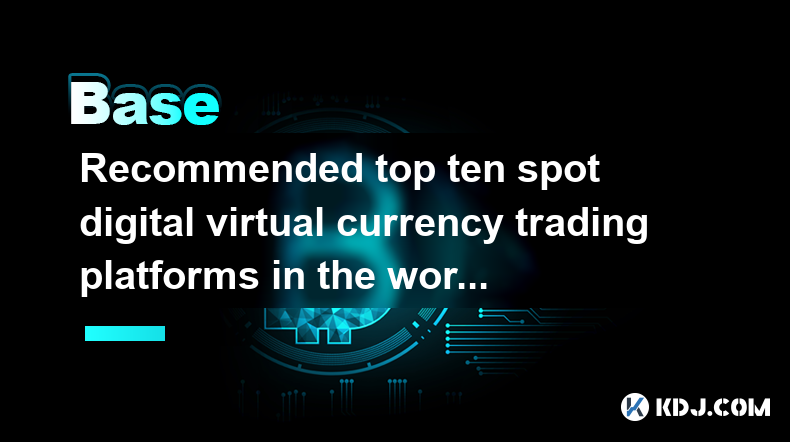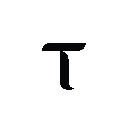-
 Bitcoin
Bitcoin $87,637.3009
3.62% -
 Ethereum
Ethereum $1,619.6345
2.40% -
 Tether USDt
Tether USDt $0.9997
-0.02% -
 XRP
XRP $2.1149
2.87% -
 BNB
BNB $602.1762
2.09% -
 Solana
Solana $137.8253
0.20% -
 USDC
USDC $0.9996
-0.04% -
 Dogecoin
Dogecoin $0.1607
4.00% -
 TRON
TRON $0.2420
-1.26% -
 Cardano
Cardano $0.6419
4.18% -
 Chainlink
Chainlink $13.4026
2.77% -
 Avalanche
Avalanche $20.3782
4.92% -
 UNUS SED LEO
UNUS SED LEO $9.0084
-3.44% -
 Stellar
Stellar $0.2566
6.15% -
 Toncoin
Toncoin $3.0111
1.38% -
 Shiba Inu
Shiba Inu $0.0...01251
1.78% -
 Sui
Sui $2.2326
5.85% -
 Hedera
Hedera $0.1696
4.46% -
 Bitcoin Cash
Bitcoin Cash $337.7284
0.90% -
 Polkadot
Polkadot $3.8972
1.25% -
 Litecoin
Litecoin $79.9963
5.10% -
 Hyperliquid
Hyperliquid $18.0042
2.62% -
 Dai
Dai $0.9999
0.00% -
 Bitget Token
Bitget Token $4.4458
2.27% -
 Ethena USDe
Ethena USDe $0.9992
-0.01% -
 Pi
Pi $0.6361
1.22% -
 Monero
Monero $215.1319
-0.70% -
 Uniswap
Uniswap $5.4058
3.91% -
 Pepe
Pepe $0.0...07908
6.59% -
 Aptos
Aptos $5.1454
2.71%
How does DAO achieve autonomy through blockchain technology?
DAOs leverage blockchain's transparency, immutability, and decentralization for autonomy, using smart contracts to enforce rules and enable member governance.
Mar 29, 2025 at 07:35 am

Decentralized Autonomous Organizations (DAOs) and Blockchain Autonomy
Decentralized Autonomous Organizations (DAOs) represent a novel organizational structure leveraging blockchain technology to achieve a high degree of autonomy. This autonomy stems from the inherent properties of blockchain: transparency, immutability, and decentralization. Unlike traditional organizations reliant on centralized control, DAOs operate based on pre-programmed rules encoded on the blockchain, eliminating the need for a central authority.
The Role of Smart Contracts in DAO Autonomy
Smart contracts are the cornerstone of DAO autonomy. These self-executing contracts, written in code and stored on the blockchain, automatically enforce the rules governing the DAO's operations. This eliminates the need for intermediaries and ensures that all actions are transparent and verifiable by all participants. Any pre-defined conditions trigger automated actions, such as distributing funds, managing membership, or executing governance proposals.
Decentralization: The Foundation of DAO Autonomy
The decentralized nature of blockchain is crucial for DAO autonomy. Unlike traditional organizations with hierarchical structures, DAOs distribute power among their members. This prevents single points of failure and reduces the risk of manipulation or censorship. Decisions are made through on-chain voting mechanisms, ensuring that all members have a voice in the DAO's governance.
Transparency and Immutability in DAO Operations
Blockchain's inherent transparency allows all DAO members to access and verify all transactions and governance proposals. The immutability of the blockchain ensures that once a decision is recorded, it cannot be altered or reversed, fostering trust and accountability. This transparency and immutability are essential for maintaining the DAO's integrity and preventing fraudulent activities.
How DAOs Use Blockchain for Autonomous Governance
The process of achieving autonomy through blockchain involves several key steps:
Defining the DAO's rules and governance structure: This involves creating a comprehensive set of rules that govern the DAO's operations, including membership requirements, voting mechanisms, and fund management protocols. These rules are encoded into smart contracts.
Deploying smart contracts to the blockchain: Once the rules are defined, they are compiled into smart contracts and deployed onto a chosen blockchain network. This makes the rules immutable and publicly verifiable.
Establishing a treasury: DAOs typically maintain a treasury, a pool of funds managed according to the rules defined in the smart contracts. This treasury is used to fund the DAO's operations and projects.
Member participation and voting: DAO members participate in the governance process by proposing and voting on proposals. These votes are recorded on the blockchain, ensuring transparency and accountability.
Automatic execution of decisions: Once a proposal passes a predefined voting threshold, the smart contracts automatically execute the decision, without the need for human intervention. This automation is a key aspect of DAO autonomy.
Tokenization and DAO Membership
Many DAOs utilize tokens to represent membership and voting rights. These tokens are often distributed to members based on their contributions or participation. The token distribution model can be defined within the smart contracts, ensuring a fair and transparent allocation of governance power. Token holders can use their tokens to vote on proposals and participate in the DAO's decision-making processes.
Challenges to DAO Autonomy
While DAOs offer significant advantages in terms of autonomy, they also face challenges:
Smart contract vulnerabilities: Bugs or vulnerabilities in the smart contracts can be exploited, potentially compromising the DAO's security and funds. Thorough auditing and security testing are crucial.
Governance complexities: Designing effective governance mechanisms that balance efficiency and inclusivity can be complex. Poorly designed governance structures can lead to inefficient decision-making.
Legal and regulatory uncertainty: The legal status of DAOs is still evolving, and regulatory frameworks are still under development. This uncertainty can create challenges for DAOs operating in different jurisdictions.
Scalability limitations: Some blockchain networks may have scalability limitations, affecting the performance and efficiency of DAOs with a large number of members and transactions.
Sybil attacks: Malicious actors might attempt to create multiple identities (Sybil attacks) to manipulate voting outcomes. Mechanisms to mitigate such attacks are essential for maintaining DAO integrity.
DAO's Evolving Landscape and Future of Autonomy
The development of DAOs is an ongoing process, with continuous improvements in smart contract security, governance models, and scalability solutions. The future of DAOs promises further advancements in autonomy and decentralized governance, potentially transforming various aspects of organizational structures and decision-making processes. The integration of new technologies like zero-knowledge proofs and improved consensus mechanisms will likely further enhance DAO autonomy and security.
Frequently Asked Questions
Q: What are the key advantages of using blockchain for DAO autonomy?
A: Blockchain provides transparency (all actions are recorded and verifiable), immutability (decisions are permanent and cannot be easily altered), and decentralization (power is distributed, preventing single points of failure). These features are crucial for establishing trust and preventing manipulation.
Q: How are decisions made in a DAO?
A: Decisions are typically made through on-chain voting mechanisms, where members use their tokens (if applicable) to vote on proposals. The rules governing voting thresholds and processes are defined in the smart contracts.
Q: What are smart contracts, and how do they contribute to DAO autonomy?
A: Smart contracts are self-executing contracts with the terms of the agreement between buyer and seller being directly written into lines of code. They automatically enforce the rules governing a DAO's operations, eliminating the need for intermediaries and ensuring transparency.
Q: What are the potential risks associated with DAOs?
A: Potential risks include smart contract vulnerabilities (bugs that can be exploited), governance complexities (inefficient decision-making), legal and regulatory uncertainty, scalability limitations, and Sybil attacks (manipulation of voting outcomes).
Q: How can DAOs mitigate the risks associated with smart contract vulnerabilities?
A: DAOs can mitigate risks through thorough auditing and security testing of smart contracts before deployment, employing robust security practices, and utilizing established security protocols. Continuous monitoring and updates are also crucial.
Disclaimer:info@kdj.com
The information provided is not trading advice. kdj.com does not assume any responsibility for any investments made based on the information provided in this article. Cryptocurrencies are highly volatile and it is highly recommended that you invest with caution after thorough research!
If you believe that the content used on this website infringes your copyright, please contact us immediately (info@kdj.com) and we will delete it promptly.
- Atok Partners with Bitgert to Advance Infrastructure and Advertising Economy in Web3 World
- 2025-04-21 23:00:13
- Pi Network (PI) Coin Could Be the Next Cryptocurrency to Launch an Exchange Traded Fund (ETF)
- 2025-04-21 23:00:13
- Strategy, the world's largest corporate Bitcoin holder, has purchased 6,556 BTC for $555.8 million
- 2025-04-21 22:55:13
- Bitcoin (BTC) Price Prediction: Arthur Hayes Hints at a Final Opportunity to Buy BTC Under $100K
- 2025-04-21 22:55:13
- Binance Adds ZORA to Spotlight Projects on Binance Alpha Alongside Other Names
- 2025-04-21 22:50:12
- Bitcoin (BTC) Price Prediction: BTC Surges Nearly 5%
- 2025-04-21 22:50:12
Related knowledge

Recommended top ten spot digital virtual currency trading platforms in the world in 2025
Apr 21,2025 at 05:15pm
Recommended top ten spot digital virtual currency trading platforms in the world in 2025 1. Binance As the world's premier cryptocurrency trading platform, Binance is known for its extensive trading pairs and efficient trading services. Its features include: High Liquidity : Binance has huge trading volumes, ensuring users can trade at the best pric...

Ranking of top ten virtual currency trading apps in the currency circle (the latest authoritative list in 2025)
Apr 21,2025 at 10:28pm
The top ten virtual currency trading apps in the 2025 cryptocurrency circle are listed as follows: 1. Binance Binance is one of the world's leading cryptocurrency trading platforms, known for its efficient trading system and extensive currency support. Binance's user interface is designed with simplicity and is suitable for beginners and profess...

What are the digital currency APP trading software in 2025? Ranking of the top ten digital virtual currency trading apps
Apr 21,2025 at 08:42pm
Ranking of the top ten digital virtual currency trading apps in 2025 1. Binance Binance continues to maintain its position as the world's leading digital currency trading platform in 2025. Its advantages include: Efficient trading volume : Binance has top trading volumes around the world, ensuring users can trade efficiently at any time. Diverse tra...

Ranking of the top ten cryptocurrency trading apps in the currency circle in 2025
Apr 21,2025 at 08:49pm
Ranking of the three major virtual currency trading applications in the currency circle Binance: The world's leading cryptocurrency trading platform Binance has always been one of the pioneers in the cryptocurrency trading world. With its huge trading volume and a wide user base, it has become one of the most popular trading platforms in the world. ...

Top 10 best virtual currency trading platforms in the world ranked latest rankings for 2025
Apr 21,2025 at 10:00pm
Top 10 Most Popular Virtual Currency Trading Platforms in the World 1.Binance Binance is one of the world's leading cryptocurrency trading platforms, and is popular for its high liquidity and rich trading pairs. Binance supports over 500 cryptocurrencies and provides fiat currency deposit and cash withdrawal services. The platform interface is user-...

A list of the top ten digital currency trading apps in the world (2025 professional authoritative list)
Apr 21,2025 at 04:00pm
A list of the top ten digital currency trading applications in the world 1. Binance As the world's largest digital currency trading platform, Binance ranks first with its huge trading volume and rich trading pairs. Binance not only supports a variety of digital currency trading, but also provides a variety of services such as leveraged trading, futu...

Recommended top ten spot digital virtual currency trading platforms in the world in 2025
Apr 21,2025 at 05:15pm
Recommended top ten spot digital virtual currency trading platforms in the world in 2025 1. Binance As the world's premier cryptocurrency trading platform, Binance is known for its extensive trading pairs and efficient trading services. Its features include: High Liquidity : Binance has huge trading volumes, ensuring users can trade at the best pric...

Ranking of top ten virtual currency trading apps in the currency circle (the latest authoritative list in 2025)
Apr 21,2025 at 10:28pm
The top ten virtual currency trading apps in the 2025 cryptocurrency circle are listed as follows: 1. Binance Binance is one of the world's leading cryptocurrency trading platforms, known for its efficient trading system and extensive currency support. Binance's user interface is designed with simplicity and is suitable for beginners and profess...

What are the digital currency APP trading software in 2025? Ranking of the top ten digital virtual currency trading apps
Apr 21,2025 at 08:42pm
Ranking of the top ten digital virtual currency trading apps in 2025 1. Binance Binance continues to maintain its position as the world's leading digital currency trading platform in 2025. Its advantages include: Efficient trading volume : Binance has top trading volumes around the world, ensuring users can trade efficiently at any time. Diverse tra...

Ranking of the top ten cryptocurrency trading apps in the currency circle in 2025
Apr 21,2025 at 08:49pm
Ranking of the three major virtual currency trading applications in the currency circle Binance: The world's leading cryptocurrency trading platform Binance has always been one of the pioneers in the cryptocurrency trading world. With its huge trading volume and a wide user base, it has become one of the most popular trading platforms in the world. ...

Top 10 best virtual currency trading platforms in the world ranked latest rankings for 2025
Apr 21,2025 at 10:00pm
Top 10 Most Popular Virtual Currency Trading Platforms in the World 1.Binance Binance is one of the world's leading cryptocurrency trading platforms, and is popular for its high liquidity and rich trading pairs. Binance supports over 500 cryptocurrencies and provides fiat currency deposit and cash withdrawal services. The platform interface is user-...

A list of the top ten digital currency trading apps in the world (2025 professional authoritative list)
Apr 21,2025 at 04:00pm
A list of the top ten digital currency trading applications in the world 1. Binance As the world's largest digital currency trading platform, Binance ranks first with its huge trading volume and rich trading pairs. Binance not only supports a variety of digital currency trading, but also provides a variety of services such as leveraged trading, futu...
See all articles






















































































